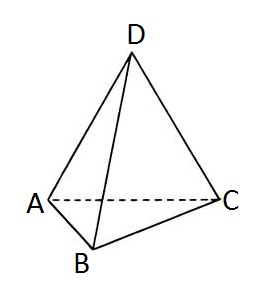You are given a tetrahedron. Let's mark its vertices with letters A, B, C and D correspondingly.

An ant is standing in the vertex D of the tetrahedron. The ant is quite active and he wouldn't stay idle. At each moment of time he makes a step from one vertex to another one along some edge of the tetrahedron. The ant just can't stand on one place.
You do not have to do much to solve the problem: your task is to count the number of ways in which the ant can go from the initial vertex Dto itself in exactly n steps. In other words, you are asked to find out the number of different cyclic paths with the length of n from vertex D to itself. As the number can be quite large, you should print it modulo 1000000007 (109 + 7).
The first line contains the only integer n (1 ≤ n ≤ 107) — the required length of the cyclic path.
Print the only integer — the required number of ways modulo 1000000007 (109 + 7).
2
3
4
21
思路:
递推ans[n]=ans[n-1]*2+ans[n-2]*3,但是ans会很大,需要取模
取模后的ans可能已经不是ans了
(ans[n-1]%mod*2+ans[n-2]*3)%mod==(ans[n-1]*2+ans[n-2]*3)%mod 是否成立?
经过查阅
1.(a*b) mod M=(a mod M)*(b mod M) mod M
2.(a+b) mod M=(a mod M+b mod M) mod M;
#include<bits/stdc++.h> using namespace std; int main() { long long n,ans,a=0,b=3,c=6; cin>>n; if(n<4) { if(n==1)ans=a; else if(n==2)ans=b; else if(n==3)ans=c; } for(int i=4;i<=n;i++) { ans=(b*3+c*2)%1000000007; a=b; b=c; c=ans; } cout<<ans<<endl; return 0; }